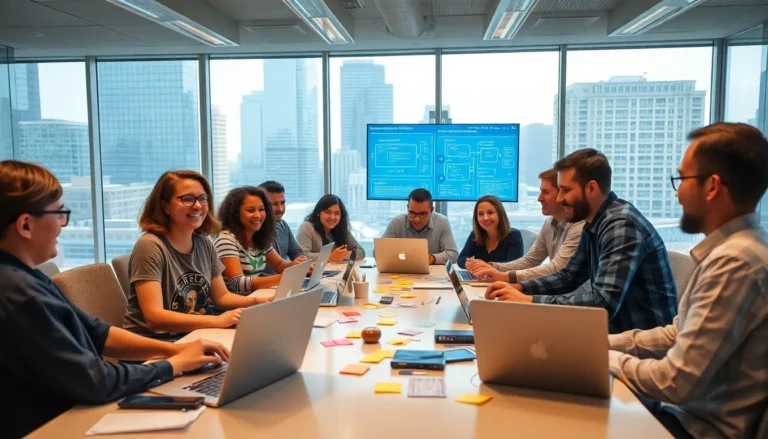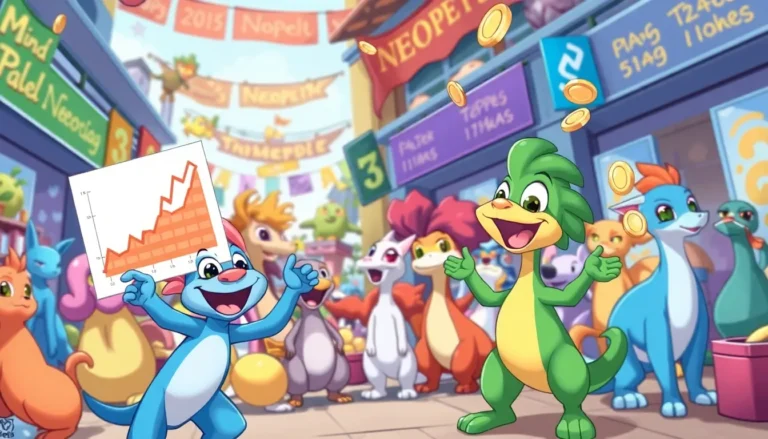Table of Contents
ToggleIn a world where the daily grind can feel like a never-ending loop of coffee runs and deadlines, lifestyle design swoops in like a superhero with a cape made of freedom. It’s all about crafting a life that isn’t just lived but truly enjoyed. Imagine waking up excited instead of groaning at the thought of another day at the office. Sounds dreamy, right?
Lifestyle design isn’t just a buzzword; it’s a game changer. It empowers individuals to take control of their time, energy, and happiness. Whether it’s trading in a cubicle for a beachside workspace or simply finding more joy in the everyday, the possibilities are endless. So buckle up and get ready to explore how to turn that mundane routine into a vibrant masterpiece that even Picasso would envy.
Understanding Lifestyle Design
Lifestyle design involves intentional planning to create a meaningful and satisfying life. Individuals focusing on their needs and desires can shift away from societal expectations. They can prioritize health, career satisfaction, relationships, and personal growth.
Defining lifestyle design starts with self-awareness. It’s essential to identify values and passions. Evaluating time spent on activities helps determine what aligns with personal goals. Clarity leads to informed choices that enhance everyday experiences.
Setting specific intentions transforms aspirations into achievable targets. He or she can define what a fulfilling life looks like by establishing priorities. Creating a vision board or journaling can solidify these intentions, providing motivation and guidance.
Embracing flexibility is crucial in lifestyle design. Life changes and so might needs and desires. Being open to adjustments allows for continued growth and satisfaction. Resilience often fosters innovative solutions to challenges encountered along the way.
Incorporating balance plays a vital role in overall well-being. Achieving harmony among work, leisure, and personal time reduces stress and burnout. Scheduling regular breaks and vacations maximizes productivity while maintaining enjoyment in daily life.
Individuals embracing lifestyle design often report increased fulfillment. Engaging in meaningful work leads to heightened job satisfaction. Cultivating relationships and pursuing hobbies contribute to enhanced happiness and well-rounded living.
Taking control of one’s life through lifestyle design not only promotes joy but also empowers individuals to shape their futures. This proactive approach encourages an enriching experience and cultivates a life worth living.
The Principles of Lifestyle Design

Lifestyle design revolves around intentional planning to create a fulfilling life. This approach empowers individuals to prioritize what truly matters, leading to increased happiness and satisfaction.
Self-Assessment and Goal Setting
Self-assessment serves as the foundation for effective lifestyle design. Individuals reflect on their values and passions, clarifying what they want from life. Setting specific goals helps redirect energy toward those aspirations. Creating vision boards acts as a practical tool for maintaining focus, bridging the gap between dreams and reality. Regularly revisiting these goals allows for adjustments, ensuring they align with evolving desires and circumstances. This proactive approach fosters a sense of ownership and drives motivation.
Embracing Flexibility and Adaptability
Flexibility remains essential in lifestyle design, as life often presents unforeseen changes. Embracing adaptability enables individuals to navigate these shifts smoothly. Open-mindedness encourages reassessing priorities when personal circumstances change, whether in health, career, or relationships. Recognizing the need to adjust plans fosters resilience and continuous growth. Balancing work, leisure, and personal time becomes more manageable through this adaptive mindset. This proactive flexibility supports a holistic lifestyle that promotes overall well-being and satisfaction.
Practical Steps for Implementing Lifestyle Design
Implementing lifestyle design involves tangible actions and strategies. The following sections outline practical steps to help individuals take charge of their lives.
Time Management Techniques
Effective time management techniques promote a productive lifestyle. Prioritize tasks using the Eisenhower Matrix, categorizing them based on urgency and importance. Break projects into smaller, actionable steps, ensuring each task feels manageable. Utilize tools like timers and apps to maintain focus, setting specific periods for concentrated work. Regularly review daily activities to identify time-wasting habits and adjust accordingly. Those who practice these techniques often find they create more space for personal interests and self-care, leading to a more balanced life.
Creating a Personalized Action Plan
A personalized action plan is essential for designing the desired lifestyle. Begin by defining clear, achievable goals aligned with personal values and passions. Use a vision board to visualize aspirations, making them tangible and motivational. Create a timeline for each goal, breaking them down into monthly and weekly objectives for better accountability. Schedule regular check-ins to assess progress, ensuring alignment with evolving desires and making adjustments as needed. Individuals who follow these steps often report greater clarity and motivation in their journey toward a fulfilling lifestyle.
Tools and Resources for Lifestyle Design
Utilizing effective tools can significantly enhance the lifestyle design process. Various apps support goal setting and habit tracking, making aspirations easier to visualize and achieve. For example, Trello offers a versatile platform for organizing tasks, while Habitica gamifies goal tracking, promoting motivation through reward systems.
In addition, productivity techniques, including the Pomodoro Technique, improve focus and efficiency. This method breaks work into intervals, allowing individuals to maintain high levels of concentration. Keeping track of progress with tools like Todoist helps individuals prioritize tasks and meet deadlines without feeling overwhelmed.
Vision boards serve as a powerful resource for visualizing dreams and aspirations. By incorporating images and words that resonate personally, individuals reinforce their goals consistently. Furthermore, journaling provides a reflective practice to clarify thoughts, assess progress, and adjust plans as necessary.
Online courses available through platforms like Coursera and Skillshare enable continuous learning. Accessing content catered to personal growth assists individuals in enhancing skills relevant to their lifestyle design goals. Meanwhile, podcasts focused on entrepreneurship and wellness offer inspiration and practical tips directly from experts.
Networking with like-minded individuals can deepen knowledge and accountability. Joining local meetups or online communities allows sharing experiences and advice, fostering a sense of connection. Engaging with mentors also provides guidance and insights that can streamline the lifestyle design journey.
Overall, these tools and resources form a supportive framework, empowering individuals to create intentional and fulfilling lives. Using these strategies effectively positions individuals to align their daily actions with long-term aspirations.
Embracing lifestyle design unlocks the potential for a more fulfilling and intentional life. By taking charge of time and energy individuals can create a reality that reflects their values and passions. The journey involves self-assessment flexibility and the use of effective tools that align daily actions with long-term goals.
As individuals navigate this transformative process they often discover increased job satisfaction and enhanced well-being. The commitment to continuous growth and adaptability not only fosters resilience but also leads to a richer life experience. Ultimately lifestyle design empowers individuals to shape their futures and cultivate a life filled with purpose and joy.







